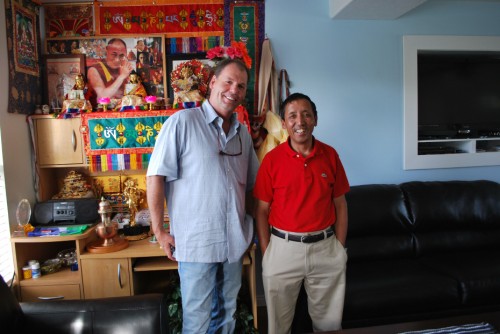by Heidi Grieser
Apa Sherpa is a small, graceful man who managed to beat his own record by summiting Mt. Everest for the 20th time in May. In fact he holds 10 world records and an award from the State of Utah as the best athlete in the state. But you won’t see Apa’s face on a Wheaties box, he doesn’t have any shoes or athletic gear named after him, and he has never had a coach or even a trainer. Apa’s simple motto is, “the mountain is there.”

Born and raised in Nepal, Apa’s last name “Sherpa” means “people from the east,” and refers to both the Nepalese ethnic group from the mountainous border with Tibet, and also to the local mountaineers that guide foreigners up Everest. Apa began working for a western tour company in his twenties as a way to support his family. On his first 16 summits Apa was a guide, often designated to carry pounds of heavy oxygen tanks and other mountaineers whose only desire was to be able to say “I summited Everest!”
Apa said the western companies charged $40,000 for his services and they only paid the local sherpas $5,000 of that, in spite of the tremendous risks involved in climbing Mt. Everest.
Since immigrating to Utah in 2006, Apa now summits Mt. Everest with a team of Nepalese Shepas who call themselves the ‘Supersherpas.” They have seen first hand the changes on Mt. Everest as a result of global warming. Apa said Everest has changed a great deal in the 20 years he has been summiting it, “the mountain is harder to climb now, more rocky.”

The Supershepas were able to secure donors who would pay per kilo for trash they carried off the mountain. The Supersherpas have carried 34,000 lbs of trash off Mt. Everest including part of a wrecked helicopter. Apa has also established a non-profit foundation that funds primary and secondary schools in his village, Thame, and is building a library there. Apa is on the school board and visits once a year to, “help and check,” but he moved to Utah in 2006 to ensure his own children would have educational opportunity.
Apa met Jerry Mica in Utah attending a sporting equipment show. Apa shared his dream of immigrating to the US with Jerry and he wrote letters to the government on Apa’s behalf and has helped him attain, not only a permanent residential status, but some recognition of Apa’s great achievements. Apa is proud to have local honors like Best Athlete in Utah right next to pictures of him meeting with Chief Justice Sandra Day O’Conner and the President of Austria.
Apa and Jerry lived together for over three years but in February Apa was able to purchase his own house with his family. When he’s not summiting mountains, Mica calls Apa, “the engineer” because he works for Diamond Molds creating precise molds for the medical and aerospace industries and he even made his own ice axe for the climb in May.
Always the climber, Apa “hikes” in Utah’s “hills” and he’ll take guests on special hikes. I for one am happy enough with my autographed photo of Apa that he was kind enough to give me for my own wall of important people I’ve met. §


